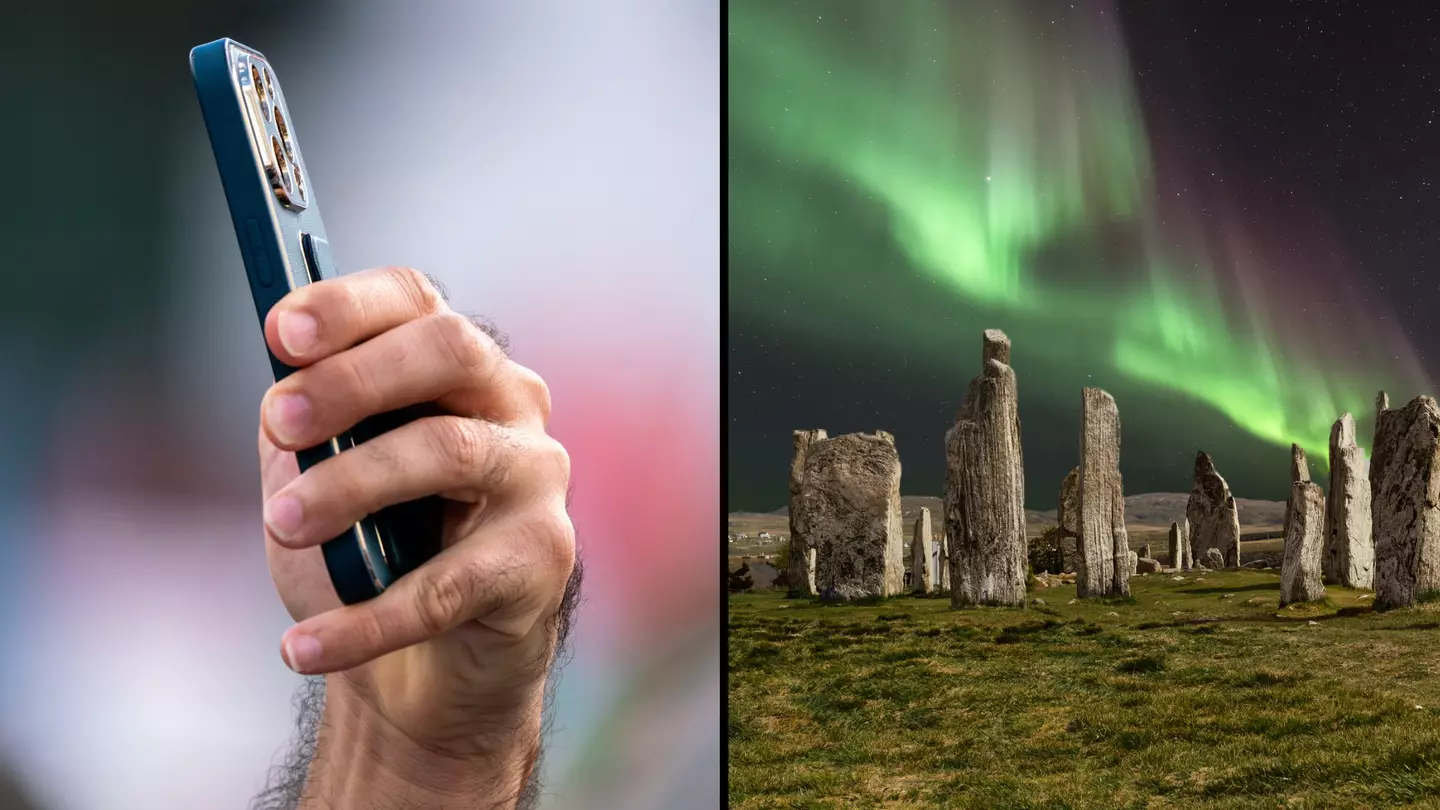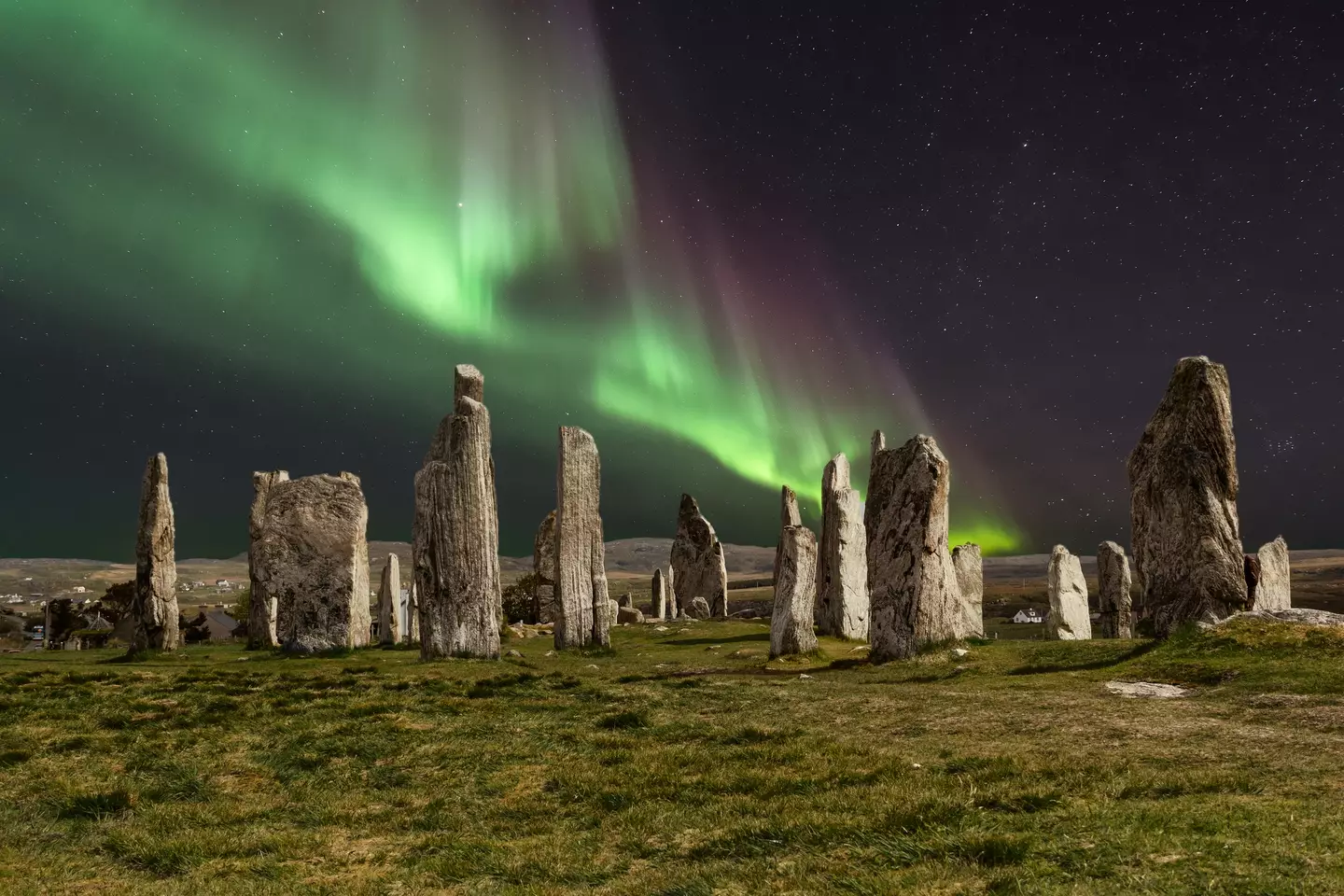
If you didn't take an Instagram picture of the Northern Lights, did they even happen?
Stargazers across the UK will soon be hoping to get a glimpse of the aurora borealis, which previously lit up the sky back in May.
And if you've got an iPhone, it's worth noting down what camera settings are best suited to capturing the best possible pic.
What are the Northern Lights?

Geomagnetic storms - which are caused by Coronal Mass Ejections (CMEs) - are a combination of large expulsions of plasma and a magnetic field from the Sun's corona that basically disturbs the outer part of the Earth's magnetic field.
Advert
With the storm in full force, it has the potential to bring the aurora down to lower latitudes, so we can see the colourful display from Earth.
Though the all important factor is to have a clear-enough sky, which is never guaranteed.
When and where can we see the Northern Lights?
The Met Office said: "Two CMEs feature in the forecast, giving a peak chance of Strong Geomagnetic Storm (G3) conditions on Wednesday 24 July.
"This may result in auroral displays down to Northern Ireland, northern England and similar geomagnetic latitudes, albeit impeded by the near-full moon and limited hours of darkness."
Advert
The most likely time you're going to see the Northern Lights is between 10pm and midnight, according to AuroraWatch UK.
"Ideally, the lights will be best viewed away from any light pollution, in remote areas, facing the northern horizon – north facing coasts produce some of the best viewing locations,” the Met Office added.
“Predominantly the Northern Lights are best witnessed in Scotland, North England, North Wales and Northern Ireland. However, under severe space weather conditions, the lights can be seen throughout the UK.”
What are the best iPhone camera settings?

Advert
Sorry Android users but we will get to you in just a sec.
If you have an iPhone 11 or newer, you have a 'night mode' setting on your phone which is marketed to help you capture the best image possible with the camera lens in low light.
Newcastle-based photographer - who goes by the name Wil Photography (@wil_photography) explained: "If your phone has night mode simply use that and either use a tripod or lean it against something for 10-15 seconds exposure, click on screen to focus on distant bright star and that should work."
Night mode turns on automatically, but if not you just need to tap the night mode icon at the top of the screen to turn it off and on.
"If not then download an app called nightcap camera for iPhone or Open camera for Android," Will added
Advert
"With settings - iso 2000 lowest number for f and shutter speed around 10 seconds, again using a tripod, make sure you focus on a distant bright star."
What are the best settings for an actual camera?
"Camera on manual mode and manual focus, take off image stabilisation/vibration control, place camera on tripod, focus manually onto a distant star," the photographer wrote on Facebook.
"Settings to start with iso 3200, shutter speed 10 seconds, aperture as wide as your lens can go (f2.8 etc).
"Use the widest lens you have so you can have longer shutter speeds - 14mm, 20mm 24mm etc.
Advert
"If you don’t have a fast lens, then ramp up your iso, do not increase your shutter speed beyond 10 seconds as you will get star trails using a 35mm lens and above."